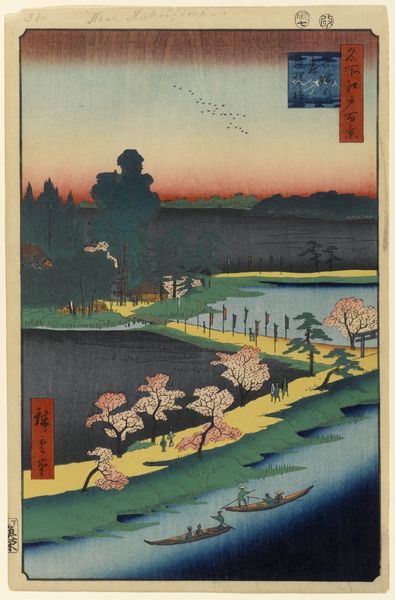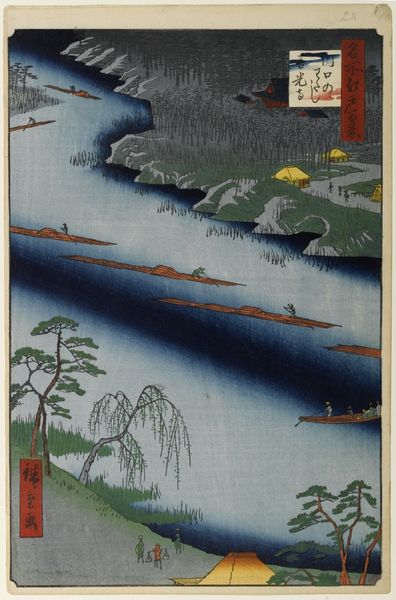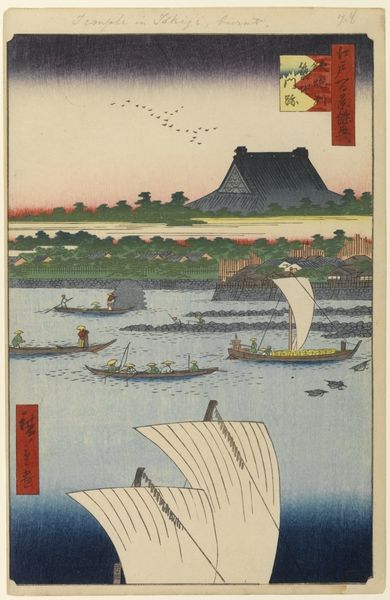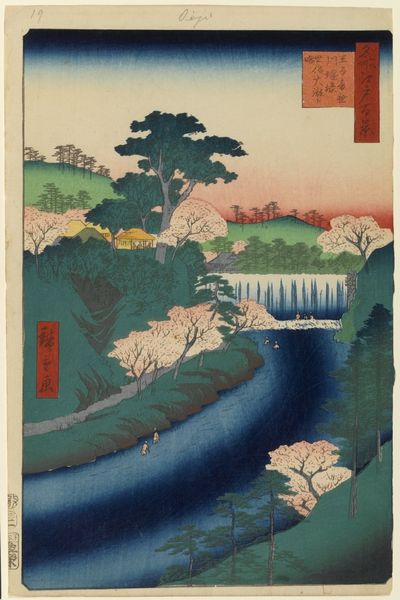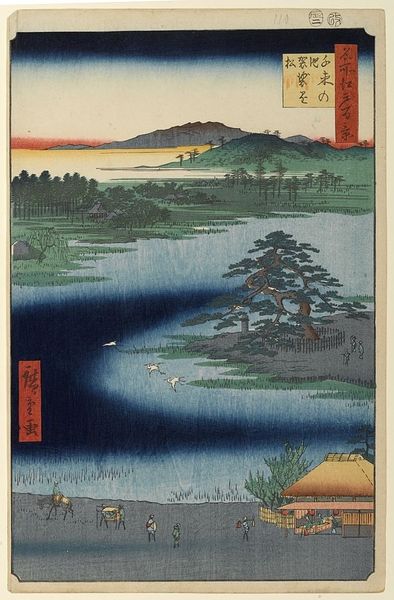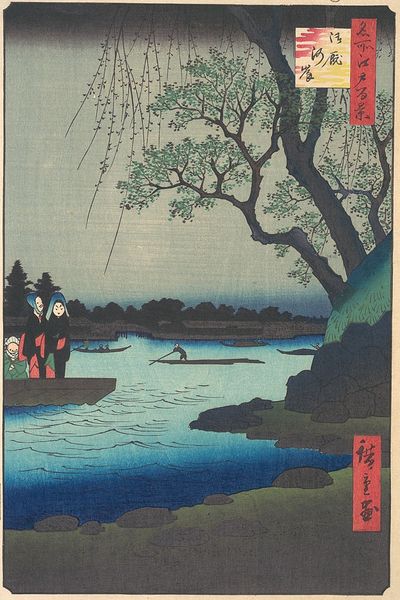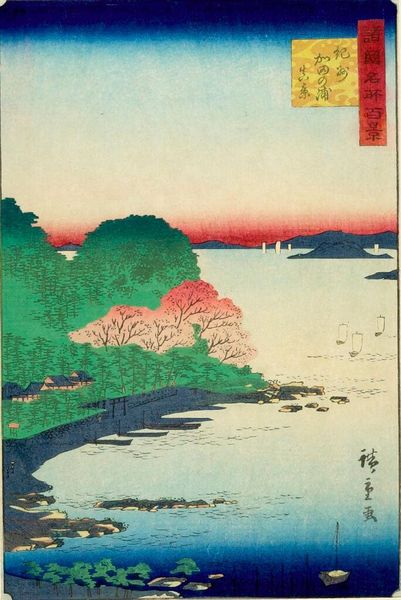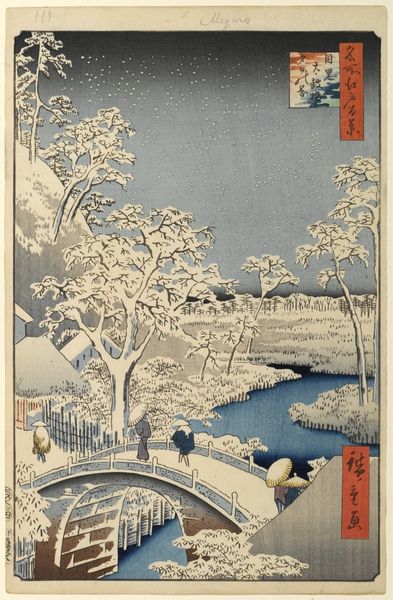
print, woodblock-print
#
water colours
# print
#
asian-art
#
landscape
#
ukiyo-e
#
coloured pencil
#
woodblock-print
#
naive art
#
watercolor
Copyright: Public domain
Editor: This is Utagawa Hiroshige’s "The Ferry at Sakasai," created around 1857. It’s a beautiful woodblock print. What strikes me most is how the deep blues of the water contrast with the soft colors of the sky, and all the birds. What do you see in this piece? Curator: Looking at the materiality of the woodblock print reveals much. The labor involved, the carving, the application of pigments - it points to a whole system of production. How do you think the choice of wood affected the lines, the textures achieved here? Editor: That’s interesting. I hadn’t considered the wood itself. Does the choice of wood imply anything about its intended consumer market? Curator: Precisely! Woodblock prints like these were not just artworks; they were commodities. Thinking about their circulation, about who bought them and why, provides context. Note the repeated motif of travel by boat. What might the ferry represent within the social and economic context of mid-19th century Japan? Editor: Perhaps it speaks to the increased mobility and trade of the period. Ferries moved people and goods. So the artwork then isn't just an aesthetic piece, but evidence of broader societal shifts. Curator: Exactly. And consider how the natural elements depicted – water, birds, the wood used for printing – each represent resources mobilized in the creation and consumption of art. How this intersects with the socioeconomic fabric of Edo-period Japan. Editor: I never really thought about prints this way before, seeing it as more about the process of image creation and less about socioeconomic production. This has broadened my perspective considerably. Thank you. Curator: Indeed, it's through understanding the means of art production, circulation, and consumption, that a deeper connection to the artwork itself may form.
Comments
No comments
Be the first to comment and join the conversation on the ultimate creative platform.
